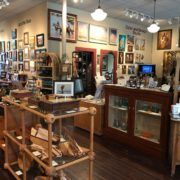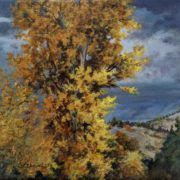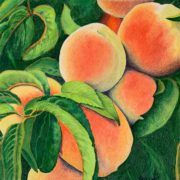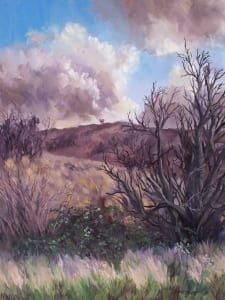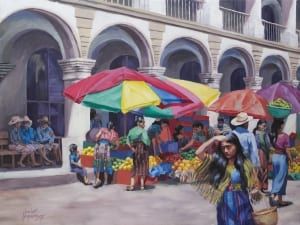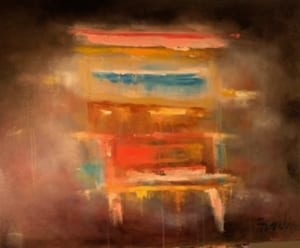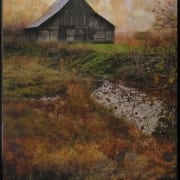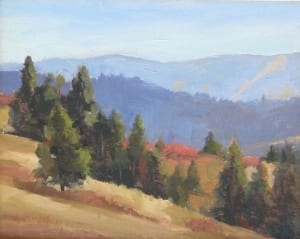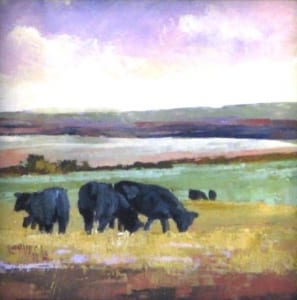The Journey Continues: Wenaha Gallery Closes September 30, 2022

Through the years, Wenaha Gallery has sought out skilled and talented Pacific Northwest artists for their paintings, sculpture, pottery, woodwork, jewelry, and more
I like to think of life as a journey.
Every day we get up, and regardless of how far we walk, by evening we are in a different place than where we started in the morning. May be better, may be worse, probably in between, but different. Even if we just sit by the road, leaning against our backpack, we don’t stay static.
And so we come to Wenaha Gallery, and its journey in the business community, and to you and me, dear readers, and our eight-year long relationship together of my writing about Pacific Northwest regional artists at the gallery.

Wenaha has made a point of carrying both original artwork and prints, and each month its walls look different, as new art arrives to replace that which sells
This September 30, after nearly 30 years in business, Wenaha Gallery of Dayton, WA, closes its doors. It’s not for lack of business, which is brisk. In a world where so much is artificial, covered with a shallow veneer of shiny materialism and brittle ambition, the human soul seeks meaning, value, goodness, joy, freedom, worthiness, and truth, and art is uniquely poised to provide that.
And art, though it is not Science, has a way asking questions, poking at the conventional, distrusting authority, exploring options, looking for answers beyond what we’re instructed to believe. Sort of like what we’re told science does.
New Stage of the Journey
No, Wenaha is closing because our owner, Pat Harri, is ready to retire, to move onto a different stage of her journey, to spend more time with family and friends. She has chosen this time to do so, and we honor her for it, as well as wish her the best of the best on her walk. Pat, our framer Savonnah, gallery associate CJ, and I are all picking up our backpacks and continuing on our journey. As are you as well, dear readers.
And I hope that you, on your life’s journey, will continue to make art a part of it, to incorporate paintings, drawings, pottery, wooden boxes, jewelry, sculpture — made by the hands of real people — into your homes and lives. In the nearly nine years I have been writing for Wenaha, we’ve touched upon the stories of more than 250 skillful, energetic, creative artists, most of them from Eastern Washington, Eastern Oregon, and Idaho. In other words, they live close to us, and it’s not impossible for us to contact them directly, see their studios, ask them questions about their work, and find something they have created that touches our heart.

One entire wall of the gallery has always been devoted to the work of regional, Pacific Northwest artists (and it’s never been big enough!)
Make that part of your journey, friends — this quest for something that touches your heart. Don’t worry — as we’ve been directed to do for so many years — about buying the “right” kind of art that the “experts” pronounce as correct and appropriate. In our lifetimes, we’ve heard enough from more than enough “experts” to start questioning a few motives, and the art world is no exception. Corporate interests make money off the choices you make, and it’s to their benefit to push your choices toward their interests.
On Your Journey, Ask Questions
If you, like many people, say, “I don’t know much about art, but I know what I like when I see it,” then don’t let any expert nudge you away from what you like toward what they say you ought to like. It’s your heart, your home, your personality, your life. If you feel insecure about your lack of knowledge, then do something about it. Generally, the best way to increase our knowledge of any subject is to start asking questions, and there’s nothing ludicrous at all about the question,
“So . . . what makes this artwork good?” If someone rolls their eyes at you or makes you feel stupid for asking, then move on, and find someone else who will take time to answer your questions. Many independent artists, if they don’t feel like you’re pumping them for secrets on their techniques, enjoy talking about why they do what they do, and a competent artist can converse with you about the rudiments of the skills he or she employs to create their art.
Trust Yourself
Because art, while it is subjective, does fall into the categories of “good” and “bad,” with the former exhibiting the time and effort the artist has invested to understand and successfully use his or her medium of choice. The latter comes from the hands of an amateur (who may be good someday), or a schemer, or a charlatan. It’s not enough to “feel like” you can do art, any more than you can “feel like” being a dentist.
I could go on (and on, and on) but I’ll leave it with this: trust yourself. You’re not stupid. Ask questions, read, research, learn, recognize how much you still don’t know, and keep going. Don’t let any one person or philosophy be your guru. Dig in your heels and resist when you’re instructed to accept, without question, what “other people” say.
And buy what you like.
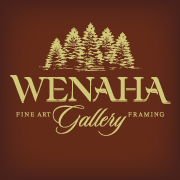 Wenaha Gallery remains open until September 30, 2022, both at 219 E. Main Street, Dayton, WA and online at wenaha.com. We are marking our last day with Cake All Day, our traditional celebration of our anniversary. Drop in anytime from 9 to 6, enjoy a slice of cake, and chat with us. We look forward to seeing you before then, and on that day!
Wenaha Gallery remains open until September 30, 2022, both at 219 E. Main Street, Dayton, WA and online at wenaha.com. We are marking our last day with Cake All Day, our traditional celebration of our anniversary. Drop in anytime from 9 to 6, enjoy a slice of cake, and chat with us. We look forward to seeing you before then, and on that day!
Contact the gallery, located at 219 East Main Street, Dayton, WA, by phone at 509.382.2124 or e-mail art@wenaha.com. Gallery hours are 9 a.m. to 5 p.m. from Monday through Friday, and by appointment. Visit the Wenaha Gallery website online at www.wenaha.com.

